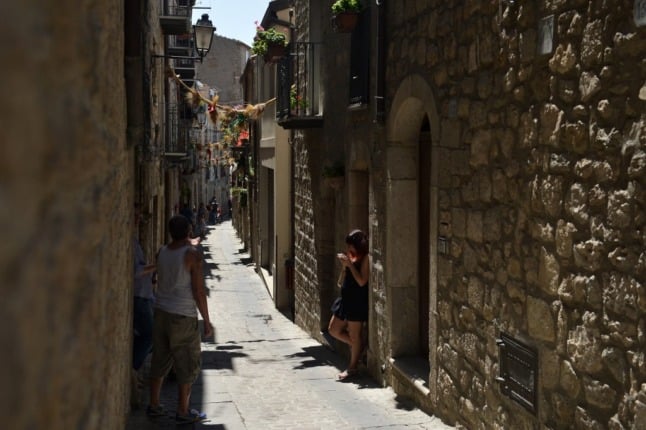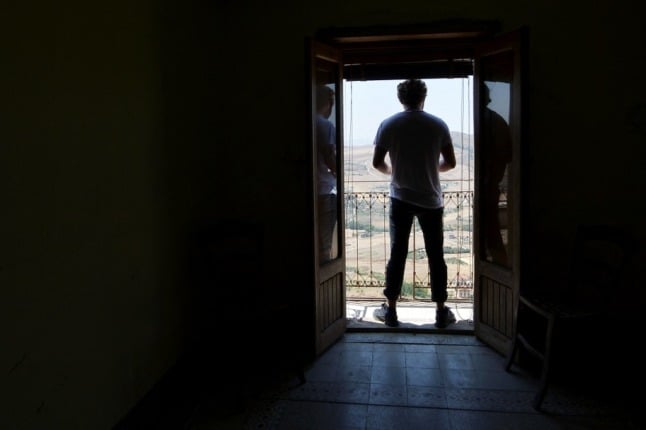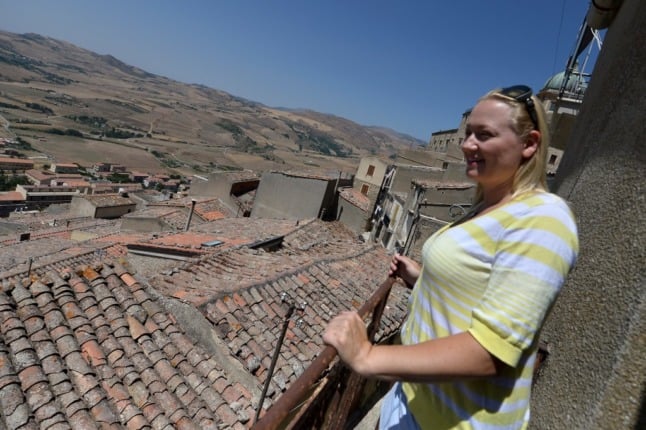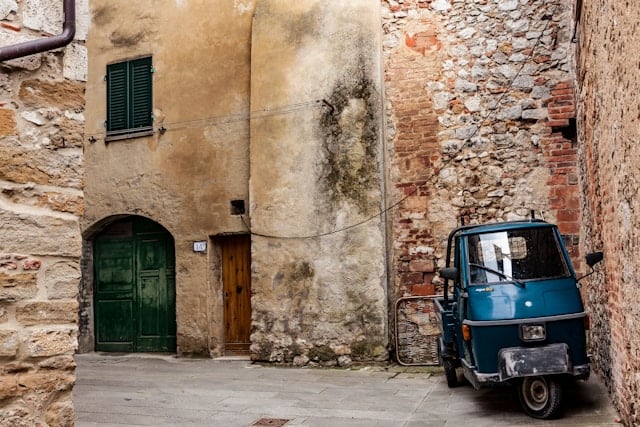Dozens of depopulated towns and villages across Italy are placing crumbling one-euro homes on the market for less than the cost of an espresso. From the nippy Alps to scorching hot Sicily, almost all regions have come up with this alluring scheme to lure new residents and revive their dying communities.
But while foreigners are rushing to snatch up a bargain home that comes with year-round sunshine – albeit with the burden of renovating it – Italians don’t seem to have taken the bait.
I’m not saying that none of the new buyers are Italian, just that when compared to foreigners they’re down to a minimum. When Sambuca di Sicilia in 2019 sold its first lot of cheap houses, those who applied and eventually bought them were nearly all foreigners, and just a few Italians.
OPINION: Bargain homes and fewer crowds – but Italy’s deep south is not for everyone
There are no official statistics on the nationalities of those who have bought a one-euro property, but I’ve talked to nearly all mayors involved in the initiative and they ended up confirming what seems to be the leading trend: Italians are much, much less interested than foreigners in buying a bargain home.
In the past five years people from all over the world have joined the so-called ‘one-euro buyers club’: from Brazil to Australia, the US, Europe, Russia and even Africa.
But when it comes to Italians, the few that I know of either come from larger but minor cities in Italy or from nearby towns and felt like simply moving to the countryside. And they’re either families or retired couples looking for a peaceful spot, not really young people willing to kickstart a new commercial activity or bring some buzz into town.

The main reason why Italians find one-euro homes less sexy than foreigners do is that they look more at the cons than the pros – because they know how things in their country work better than outsiders.
The potential hassle of having to renovate a dilapidated property within a limited timeframe (usually three years), dealing with excessive red tape and paperwork, and then having to look after another house in Italy aside from their main home can be discouraging.
READ ALSO: These are the Italian towns offering houses for one euro
Italians, as opposed to foreigners, aren’t easily seduced by the romanticism of buying heaps of old stone with a history or by the thrill of the renovation, which actually scares them away. There are exceptions, of course: Italians falling in love with lost, forgotten villages where time stands still either because they were taken there by friends during their university years or because they want to escape the crowds.
The truth is, many foreigners snap up these one-euro homes not just because of the bargain price but because they actually carry out the restyle themselves and are excited about the project. They love to breathe new life into an old shepherd or peasant cottage and watch it transform.
Most Italians on the other hand tend to be lazy with DIY makeovers and basically fail to grasp the potential and adventure of such an operation.
Talking to realtors, sociologists and real estate analysts I was shocked by their underestimation of the one-euro homes business and the economic revolution it has triggered in many Sicilian villages like Gangi and Sambuca, drawing investments and new people.

Some weren’t even aware of the huge success the scheme has had abroad and the global headlines it usually makes when one new town joins the club.
One realtor even replied: “I’m not sure it will have a future, and in any case, it will never kick off among Italians”. The last part of his observation is correct.
A Sicilian friend of mine brushed it away with a laugh. She, like many other Italians I have spoken to, says it would be “hell” to buy and renovate a one euro home.
Among the reasons she listed not having time to follow the restyle and the nuisance of having to carry heavy water bottles and grocery bags from the car to the house.
Logistics can be tricky. In small villages, where alleys are wide enough for donkeys and scooters only, the ancient district is accessible only on foot and during summer it’s impossible to find a parking spot (as Italians say: ‘dove la metto? me la metto in tasca’, or ‘I’ll have to put the car in my pocket’).
READ ALSO:
- How to stay out of trouble when renovating your Italian property
- Will Italy really pay you to move to its ‘smart working’ villages?
- The ups and downs of buying a property for retirement in an Italian hilltop town
Yet for foreigners this is all part of ‘living the rural adventure’. And for many, a nostalgic way to reconnect with the town of their ancestors who migrated abroad decades ago.
In my view the ultimate reason why Italians aren’t so keen on the one-euro homes is that they’re already based in Il bel paese, aka ‘the beautiful country’ as they call their homeland. They were born and raised here so they can’t even fathom what it means for a foreigner to grab a slice of la dolce vita and be able to stay months in Italy in a very affordable way.
Spending even 50.000 euros in renovating a one-euro home is still way less than what any other type of property in Italy would cost. And it’s more than just a house. It’s a sort of ‘terminal’ or ‘launchpad’ from where you can explore not just the entire country but the rest of Europe.
Many Americans and Russians who have snapped a one-euro home have also done it to have a ‘door’ to the Old Continent. Italy is a small country when compared to the States, distances are shorter, and you can cross several regions in a one-hour drive. From anywhere in Italy you can drive to go skiing in France, Switzerland, or Austria. From the port of Bari in Puglia you can hop on a ferry boat to visit Greece, Croatia and Slovenia, while stunning Corsica is a stone’s throw from Tuscany. Not to mention all the gorgeous, exotic Sicilian islands to discover.
Italians already have all this beauty at their disposal – in their ‘backyard’ – and such luxury, or luck, inevitably diminishes the appeal of the one-euro dwellings.



 Please whitelist us to continue reading.
Please whitelist us to continue reading.
I bought several properties in Campania, Basilicata, Puglia and Le Marche. Added fees, overrides and “add-ons” make it much higher than one euro. However, here is my bottom line: I paid an average of just over 1000 euro for each property, save for one — I just paid the back taxes. One (near Matera) was was an estate, and the previous owner went BK. Since the property was paid for, I only have to pay taxes, insurance and upkeep on it. A good B&B find.
(see next)
Your best bet is to go to the region you want to buy in, talk to the locals there, get to know them, then find an avvocato who is well-versed in real estate. Your banking situation must be cleared up (get an Italian bank first) and ensure that whatever the cost of your purchase is — whether it was cheap like mine or you’re buying from a realtor and are loaded)n — you have somewhere between 10-20% of the net cost to you to close on the property.
(next)
Failure to do this leads to delays, and someone swooping in to take your prize away from you.
My total outlay for everything I’ve talked about here is just shy of 70K Euro. All 7 properties have been appraised at around 2.3MM euro. If you work the system, the system will work for you. Get to know the locals, the language (at least, intermediate level), the local culture and above all, be patient.